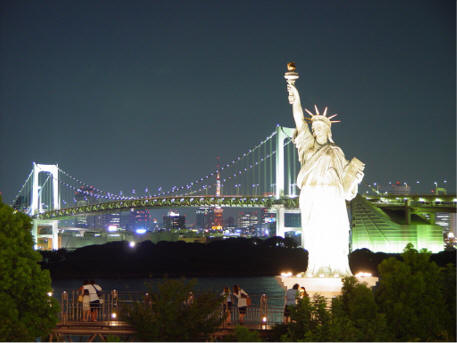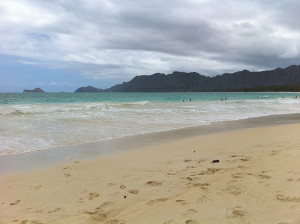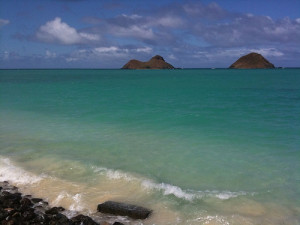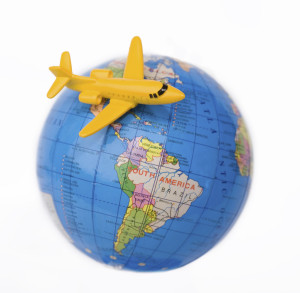Archive for the 'Travel' Category

Explore your new city or town by having a staycation.
By Relocation.com
No matter how much planning and organization one puts into moving, the inevitable turmoil and disruption is exhausting and draining for everyone; and, even when the movers have left, you will still be faced with the turmoil of unpacking, finding a space for everything in unfamiliar territory and disposing or recycling all the packing materials.
The best way to recover from moving is to have a staycation. An amalgamation of ‘stay at home’ and ‘vacation,’ a staycation is – a vacation while staying at home. It is probably also one of the only times when you and your family will enjoy staying at home instead of traveling.
Here are some of our ideas to have the best staycation this summer:
1. Go out and explore your new neighborhood. Check out the local shops, parks, and grocery stores. You can take a bike tour or walk through your new city or town. You will be amazed at what your new area has to offer.
2. Try a new restaurant and chat to strangers. Trying new food is a great way to learn more about the local cuisine. When you are out, meet and talk with people. This is a great way to make friends and learn more about your area.
3. Take a mini-getaway a few hours away but still stay at home. This is a great way to explore local amenities as well as save money on hotel fees.
4. Check out local carnivals. The summer is a great time for local carnivals and fairs. Spend a day with your family exploring exciting thrill rides, local fare and exploring prizes.
5. Indulge. Vacations are all about taking a break and indulging. Consider your staycation to also be about indulging by having a spa day. Have a massage, manicure and/or pedicure or a luxurious rest in a sauna.
Don’t forget to like us on Facebook and follow us on Twitter!
• Follow us on Twitter @Relocation_News
• Become a fan of Relocation.com on Facebook

Home swapping is a great way to check out a new destination without having to deal with expensive hotel fees
By Relocation.com
Have you always wanted to go on an international holiday, but cannot do so because of the traveling and hotel costs? If budget is a major constraint, then home swaps are best option for you. Home swaps are extremely popular these days. These are some points that explain how home swap works.
The Fundamentals:
You can use online services to search people who live in holiday destinations that you choose. E-mail them and offer to swap homes for a frame of time. Using this method, both of you will cut down the charges of vacation lodging. Some home swaps are also available with cars, bicycles or subway passes. However, it is not compulsory to include vehicles or passes in your home swap.
This will help you save the money that you would have spent on hotels. Home swaps are extremely useful as they make your vacations more intimate, and it lets you stay there as locals. These private houses are more comfortable than hotels. A house will also give you a complete kitchen, along with additional amenities. With this, you will be able to save a great deal when it comes to food and laundry.
Where To Swap?
People who live in posh beachfront houses or luxury condos are likely to get more offers than the ones living in quiet suburbs. At times, swappers also choose places that are close to their relatives, hospitals, or business areas. Before you jump on the deal, you must do some research and find out the kinds of options available for you. If you have a house in the countryside and you are swapping it with someone who owns an apartment in the city, it’s a great deal.
Get Started:
Home swapping services are widely available on the Internet. You may have to pay a nominal membership fee to see the listings of the available houses. You can search for houses on the basis of amenities or location. For instance, you can look for beachfront condos or a house that has a hot tub. You can also look at user feedback and ratings about the houses. Few websites also offer to mediate in cases of disagreements.
Realistic Considerations:
Certainly, there are few realistic considerations while swapping homes. Follow these simple precautions while swapping homes:
• Know the person you are swapping your house with. Keep touch via calls and mails. If you find anything fishy, feel free to cancel your swap.
• Keep all your valuable and fragile items away while swapping homes.
• Get relevant information about the area and the address. Do not mingle with people who are not willing to provide addresses well in advance.
• Find insurance companies that cover home swaps.
• Mention and find out about the presence of pets in the house. This should be discussed well in advance.
• Several swapping services provide contracts. Make sure you read them well and beforehand.
Swapping your home can be really easy. When you realize how convenient, easy and frugal home swapping can be – you’ll never want to stay in a hotel during your holidays every again.
Don’t forget to like us on Facebook and follow us on Twitter!
• Follow us on Twitter @Relocation_News
• Become a fan of Relocation.com on Facebook

Check out our guide to visiting NYC for under 100 bucks!
By Joann Pan
Special to Relocation.com
Students, vacationers and New York natives, you will soon realize that there is so much to do in NYC. Relocation.com would like to offer a guide of things to do to get acquainted making for a grand finish to your moving to New York. New York City is so much more than dirty water hot dogs and shopping, here’s our version of the perfect NY day.
Morning
Like any New Yorker would start off the day, you need to get a great cup of coffee to get that extra pep in your step and energy for the long day ahead of you. The kids can get some delicious hot chocolate or some juice. We greatly recommend FIKA Expresso Bars with two convenient locations in the city Midtown at 41 West 58th St between Avenue Of The Americas & Grand Army Plaza [take the N or R to Fifth Avenue and 60th Street] or in the Financial District [take 2 or 3 to Wall Street for sights of the hustle and bustle outside of New York Stock Exchange]. FIKA coffees, iced coffees and lattes surpass any of the coffee we have had around NYC and other coffee hotspots in the world.
We would recommend starting in the Financial District and working your way uptown to the other sights we have planned. After finishing up your FIKA-perfect cup of caffeine and pastries (do take some chocolate balls for the road for the kids), you can walk up towards the New York Stock Exchange for a photo opportunity. Ladies: note the huge Hermes, Tiffany & Co. and Thomas Pink stores alongside Broad Street and Wall Street for a later date.
Head towards the Fulton Street and the South Street Seaport for our first point on our New York City tour. If you love biology or science, we would recommend going through the Bodies Exhibit at 11 Fulton Street between South Street and Front Street. I remember going to this exhibit with my younger sister and mother and we couldn’t get enough of [real] bodies. My sister and I loved seeing what bones, arteries, veins, intestines, organs and muscles looked like in various poses whether it was bending down or taking a jump shot. There are even sections where you can see what effects diseases physically have on your body. You will never know your body better than today. If you think you or one of your friends will get squeamish about the displays made from real bodies, you might want to take an alternate route and head toward the South Street Seaport and examine the boats docked there. Read: Another cool photo opportunity.
Fika Latte – $3.75
Chocolate Balls – $2
Adult Tickets to the Bodies Exhibit – Around $33, differs with service fees and weekday/weekend charges.
Afternoon
After your family gets enough of the southern tip of Manhattan, it’s time to move up. Climb abroad the NYC subway… you want to transfer at Union Square, so climb abroad any train from Fulton Street to 14st Street-Union Square so you can ultimately ride the L “8th Avenue” train to 14th Street and 8th Avenue. Once you walk out of the subway station, you’ll find yourself in the Chelsea/Meatpacking District of Manhattan. What you’ll be looking for is The High Line—a park in the sky—a brilliant piece of art installed about two years ago, saved from demolition plans by the city. It’s free and if you come during the summer, you’ll find the Van Leeuwen Artisan Ice Cream Truck parked right near the entrance to the public park making the experience all the more better. No doubt—it will be the BEST ice cream you have ever had—yeah, we’re talking about surpassing eating fresh Honey ice cream in Rome. We love Van Leeuwan’s pistachio, cinnamon and ginger. Walking up The High Line entrance towards 12st street and Ninth Avenue, you’ll find more New Yorkers than tourists here because New Yorkers love keeping the goods to themselves. And there’s nothing like it in the city. The structure was converted from an old railway and changes every season with new flowers and plants. Your teens will love the views, apartments built right on top of the railway, New Jersey’s skyline and that fact that it only takes about 20 minutes to walk through end to end. Plus, Meatpacking District is full of cool boutiques if you need a break from NYC. Diane Von Furstenberg, Stella McCartney, Jeffrey New York, Alexander McQueen and Carlos Miele stores are all a couple doors down from one another.
Ice Cream – Around $4
Next up—lunch!
Lunch will be at this not-so-secret burger joint that doesn’t really have a name, but everyone who knows about it calls it “Burger Joint.” It’s in Midtown West in the Le Parker Meridian Hotel behind a curtain—so it’s still a secret. Usually there’s a small line, but we promise the burgers and milkshakes are worth the wait. You can walk in on the 118 West side of the hotel on 57th Street passed the little café in the hallway until you see a glowing sign in the shape of a burger. While eating be sure to try to decipher all the writing on the wall—mostly signatures by famous people. Be warned, the place is tiny, but we’ve never had too much trouble finding a seat. We recommend getting the burger with everything on it and their world-class fries!
Lunch – $7 for burger
Evening
You’ll be right near the West side of Central Park if you come out of the 57th street exit and walk towards 59th street. From here you can explore Central Park and walk towards the 72nd street Central Park Boathouse. Your teens will love the opportunity to get into a boat and row away from the city. Take turns rowing and napping if you need! The lake is very scenic. Row to the different areas of the lake and the small stone bridge made famous in the movies and TV shows.
We would recommend taking it easy at night with dinner at the Central Park Boathouse restaurant or with a show. We love Fuerzabruta, which can be found off Broadway on 101 East 15th Street. The show is intense and heart pounding because it takes place mid-air. If you like Cirque Du Soleil or any kinds of interactive show this one is for you! Warning: you might get wet. It’s a good time, we promise.
By the end of the day, you’ll have experienced Relocation.com’s version of the perfect day in New York City. Enjoy!
Central Park Boat Rental – $12 first hour, $3 each additional 15 minutes. $30 cash deposit required per boat.
Total of day activities – Around $66
Don’t forget to like us on Facebook and follow us on Twitter!
• Follow us on Twitter @Relocation_News
• Become a fan of Relocation.com on Facebook
February 22nd, 2011 by
Admin
Categories:
condos,
DIY Move,
family moving,
foreclosures,
homes for sale,
House Swap,
Moving,
Moving Day,
Plan Your Move,
Plan Your Relocation,
Real Estate,
Relocation,
rentals,
Travel Comments:
No Comments »
Looking to buy a home in Hawaii? Whether you’re relocating to the islands or thinking of buying an investment property, finding the right piece of Hawaii real estate requires time, effort, and yes, an island visit — or two! Though you can easily narrow down prospective island properties with a myriad of online tools, virtual house hunting can only take you so far. There’s no substitute for the real thing.
Visiting Hawaii isn’t exactly a hard sell, but if you’re new to the islands; it can still be daunting. Here are some quick tips to keep in mind before you book your trip.
1. You don’t have to splurge on a hotel.
There are two versions of Hawaii: the one you see as a tourist, and the one you see as a resident. Though there is a massive amount of resources and services available to tourists, things work very differently for locals. While you’ll probably have to stay in a hotel, keep it simple. Forget the ocean view or the upgrade to a suite, and don’t rule out discount chains. After all, the point of visiting Hawaii is to spend as little time as possible in your hotel room. And you don’t want to mistake tourist luxury for day-to-day reality. You might even want to consider a Hawaii vacation rental… though be careful: these are tightly regulated, and not all of them are legal operations.
2. Be flexible on transportation.
For the most freedom and flexibility, you’ll probably want to rent a car while in Hawaii. But if your budget is limited, or if you’re not comfortable driving in an unfamiliar place, you have other options. If your interest is Honolulu real estate, the island of Oahu boasts one of the best bus systems in the country. If you find a place to stay near Waikiki or Ala Moana Center, you can catch the bus just about anywhere for $2.50 each way (or $25 for a four-day pass). Otherwise, you can look for shuttle and taxi services (though these often require reservations, as you can’t “hail a cab” on the street). Finally, remember that there are many friendly and knowledgeable Realtors in Hawaii. They would know the best way to get around your future neighborhood, and often schedule caravans or gladly take clients around on their own dime.
3. Play early, work late.
Checking out Hawaii homes and Hawaii condos is hard work, but it’s hard to resist taking some time to play tourist. You should! But if you’re looking to see some of the most popular attractions — the Arizona Memorial at Pearl Harbor, Hanauma Bay, or Diamond Head on Oahu, or the Hawaii Volcanoes National Park on the Big Island — don’t waste your time in lines or fighting crowds. Start your day as early as possible to avoid the crunch, and to save more of your day for your property search. Hike Diamond Head at dawn, catch the first tour at Pearl Harbor, and be ready to get back to work by lunch. The afternoon and early evening is often the best time to meet with Realtors or sellers, anyway.
4. Eat different.
Hungry? Sure, Hawaii is a U.S. state, and has most of the brands and chains Americans love. But Hawaii is in many ways a whole other country, and overflows with unique dining options. Try to make it through your stay without visiting a single chain restaurant. Or at least stick to Hawaii-based chains: Zippy’s and L&L Hawaiian Barbecue restaurants are almost everywhere. Mom and pop diners and food trucks are great options as well. Remember that Hawaii has strong ties to the Pacific Rim and Asia, and explore those cuisines. You probably won’t be able to stick to your diet while in the islands, but you could quickly become an expert in sushi, or the local plate lunch.
5. Slow down, and take it easy.
If you’re used to the fast-paced, brisk and efficient pace of business in most American cities, landing in Hawaii can be a jarring experience. Bringing expectations from New York, Chicago or L.A. will only lead to frustration. Things in Hawaii move slowly, run late, and are usually very casual. (“Hawaiian Time” is an oft-used phrase that essentially means nothing starts or runs on time.) Leave your ties at home, don’t panic if you get a hug instead of a handshake, and expect to miss a few appointments. Rather than trying to squeeze in six visits or meetings, plan for three, then play it by ear.
Finally, don’t forget the basics. Wear sunscreen and carry water, as you can still get sunburned or dehydrated during “winter” in Hawaii. Don’t leave valuables in your rental car, and keep important documents safe. And most importantly, enjoy. You’re in Hawaii!

Enjoy a sunset view at one of these romantic destination spots. (Image Credit: http://www.newlywedretreats.com)
By Serena Norr
With Valentine’s Day a few days away we thought it was the perfect time to inspire couples to take a trip to one of these romantic cities. Renowned for their beauty, exciting amenities and relaxing vibe, you and your sweetie will love venturing away from home – not to mention enjoying a much-better alternative to chocolate and roses. And who knows, your exciting getaway may just inspire an upcoming relocation.
1. Honolulu – With miles of sandy white beaches and clear water, it’s obvious to see why Honolulu is a romantic city. Located on Oahu, Honolulu is a popular travel destination where you and your loved one can enjoy restaurants, museums, beautiful lodging along the Pacific and the areas natural attractions. Travel + Leisure magazine also dubbed it as one of the most relaxing destinations to visit.
2. Charleston – A beautiful southern city seeped in a rich history, you and your sweetie can enjoy the beaches, golf, shopping, or fine dining at one of Charleston‘s numerous restaurants.
3. Napa Valley – A weekend in wine country is surely going an exciting romantic venture for you and your loved one. Research vineyards before you arrive in Napa and expect to find some unexpected places along the way.
4. Santa Fe – A romantic Southwest destination, Santa Fe is filled with gorgeous deserts, rich art and culture, delicious food and romantic adobe architecture that was also recently ranked number one for peace and quiet by Travel + Leisure magazine.
5. San Francisco – The beautiful City by the Bay is the ultimate destination for a romantic getaway. Whether it’s a visit one of the areas numerous museums or visits or a day visiting the Fisherman’s Wharf or the Golden Gate Bridge, couples will find something exciting to do in San Francisco.
6. San Diego – As a beautiful coastal city, couples will love exploring the beaches, camping, hiking, or taking a romantic sunset gondola cruise while in San Diego. The city is also home to numerous museums and galleries and features options for world-class dining and dancing.
7. New Orleans – Couples will love checking out the “Big Easy” for amazing live music, delicious cuisine like crawfish or gumbo and a lively vibe. Explore the historic Le Pavillon hotel or take a stroll along the gorgeous French Quarter for a laid-back and vibrant getaway.
8. Miami – With beautiful weather and gorgeous beaches, Miami is a lively Latin city where you and your sweetheart can enjoy your days in the sun and your nights heating up the dance floor at one of the cities numerous clubs, bars or restaurants.
9. New York – The city that never sleeps certainly has much to offer you and your mate. You can choose to spend your days shopping, sightseeing or exploring at one of the areas museums. You can also take in a Broadway show, concert or dine at one of the best restaurants in the world.
10. Aspen – A ski lover’s paradise, Aspen is the backdrop of amazing mountain scenery, fresh alpine air, recreation, seclusion and surrounding historic towns. You can choose to stay at a luxury resort or a cozy mountain cabins, as you enjoy a week of beautiful scenery, hiking, nightlife and of course skiing.
Don’t forget to like us on Facebook and follow us on Twitter!
• Follow us on Twitter @Relocation_News
• Become a fan of Relocation.com on Facebook
January 31st, 2011 by
Admin
Categories:
family moving,
Moving,
Moving Day,
Moving with Kids,
Packing,
Plan Your Move,
Plan Your Relocation,
Real Estate,
Relocation,
Schools,
Travel Comments:
No Comments » 
Research schools in Hawaii before you make the big move. (Image Credit: across.co.nz)
Guest Post by Aloha Living.com
In searching for the perfect Hawaii home, nearby schools are often as important a factor as the number of bedrooms or the view. Hawaii is unique in several ways, from its single statewide public school system to the prominence and size of private schools. Whether you have a family or are thinking of starting one, it pays to research your education options when buying Hawaii real estate.
Honolulu is home to the largest independent school: Punahou School. And Punahou’s alumni rolls are packed with notable leaders in business and politics. U.S. President Barack Obama is the school’s most famous graduate, but AOL founder Steve Case also went to Punahou, as did eBay founder Pierre Omidyar, and even Sun Yat-Sen, founder of the Republic of China.
Nestled in a valley amongst a mix of condos and historic single-family homes, Punahou houses over 3,500 students from grades K-12. Admission is fiercely competitive, with only one out of four applicants able to enroll. And the school’s prestige comes at a price: annual tuition is over $16,000.
Punahou’s closest rival is Iolani School, situated just across the way from Waikiki, perhaps the most famous stretch of Honolulu real estate. Also a private school, Iolani is known for its rigorous academics and emphasis on long-term, high-achieving career plans. If you can afford a Waikiki condo, you can probably afford to send your kids across the bridge to Iolani.
There are dozens of other good private schools in Honolulu, including the Mid-Pacific Institute in Manoa (not surprisingly, also home to some of the most expensive Hawaii real estate), and Kamehameha Schools, which focuses its efforts on benefiting students and families of native Hawaiian ancestry. Enrollment there is, obviously, pretty limited.
When it comes to public schools, choosing from among many varied Honolulu neighborhoods becomes even more important. Hawaii’s single, statewide Department of Education brings with it a few advantages, but many challenges, and compared to school systems in the rest of the U.S., it’s fair to say that Hawaii schools lag behind.
Fortunately, some Hawaii public schools have managed to distinguish themselves.
Locally, Honolulu Magazine publishes an annual ‘Grading the Public Schools’ issue that ranks all public schools in the state. And nationally, there are a number of education portals — such as GreatSchools.net — that apply their own scores and rankings to schools.
Three schools stand out in both the Honolulu Magazine and GreatSchools.net rankings.
Moanalua High School was the top-ranked public high school according to the latest report from Honolulu Magazine, and received a 10/10 rating from GreatSchools.net. Moanalua High School is located in Salt Lake, less than seven miles west of downtown. The area is among the most densely populated areas on Oahu, packed with a wide array of condo complexes.
Mililani High School also fared well in the school rankings, and it’s also one of the largest high schools in the state, with an enrollment of about 2,500. It’s located in Mililani in central O’ahu, the state’s largest planned community. Mililani is a large suburb widely known for being great for families, with thousands of single-family homes and townhomes. The commute into town is long, but the trip is often worth it to those seeking a safe community with great schools, parks, recreation centers and shopping.
Finally, there’s Kalani High School in East Honolulu, the last of the three public high schools to earn a 10/10 GreatSchools.net rating. In terms of enrollment, it’s half the size of Mililani. But because of its location near Kahala, its students generally come from more prosperous homes. East Honolulu real estate is among the state’s most coveted, and a Kahala home is often a sure sign of success.
When you’re ready to buy a Hawaii home, perhaps to start a new career or to retire, it pays to research what the area has to offer the next generation. AlohaLiving.com — a Hawaii real estate search portal powered by trusted MLS data — can help you start your search. The site includes a wide variety of neighborhood information, including school data from GreatSchools.net. Look up profiles on public and private schools, including test scores, reviews and more.
Don’t forget to like us on Facebook and follow us on Twitter!
• Follow us on Twitter @Relocation_News
• Become a fan of Relocation.com on Facebook
November 17th, 2010 by
Admin
Categories:
condos,
foreclosures,
homes for sale,
Moving,
Moving Day,
Plan Your Move,
Plan Your Relocation,
Real Estate,
Relocation,
rentals,
Travel Comments:
No Comments » 
The gorgeous beaches of Hawaii. (Photo Credit: Ryan Kawailani Ozawa)
Guest Bloggers: Aloha Living
Try as you might, but you can’t drive from Waikiki to check out the volcanic eruption at Kilauea. Hollywood is partially to blame for the widespread impression that all the many wonders of Hawaii can be found on a single island. In fact, there are actually eight major islands (and countless smaller islands and atolls) that make up the Hawaiian Islands.
Each island is very different. Whether you’re trying to decide where to visit on your next island vacation, or looking to buy your first Hawaii property or picking a place to buy a home in Hawaii, here’s a quick guide to islands of Hawaii.
Oahu
The most populated Hawaiian Island is probably the one most people are familiar with, home to the bustling tourist mecca of Waikiki, the historic World War II sites of Pearl Harbor, the world famous surf on the North Shore, and much more. There are over 870,000 people living on Oahu, most living and working in the capital city of Honolulu along the south shore of the island.
For the first-time visitor or home buyer, Oahu is usually your safest bet. On the tourist side, the island offers everything from unspoiled natural beauty to a modest nightlife, from high-end stores to a huge variety of one-of-a-kind boutique shops. You can also strike out on your own, or take advantage of countless organized activities and managed attractions.
When it comes to real estate, Oahu has $80,000 condos, $80 million estates, and truly everything in between. Whether you want to live in a high rise, on the beach, on a mountain ridge or deep in a valley, there’s plenty to choose from. Honolulu real estate offers the widest selection and largest inventory of any island. (As a result, it also has the most Hawaii foreclosures.)
Oahu has the most developed infrastructure, with solid public transportation, fairly ubiquitous Internet connectivity, low unemployment and a wide range of industries (though tourism and the military still dominate). Everything in Hawaii is expensive, but often less expensive in Honolulu, as most things shipped to the state comes through its airport and ports.
You get all the comforts of any American city, but of course, that means Honolulu is also the most crowded, has the worst traffic, and – by sheer math – has the most crime. But don’t panic. In 2010, Forbes magazine still named Honolulu the country’s third safest city.
The Big Island
The largest and youngest Hawaiian Island is the island of Hawaii. Of course, that’s also the name of the state, so most people refer to it as The Big Island. It’s the second most populous island, but that population is spread out over a much larger area. How big is it? All of the other Hawaiian Islands could fit on top of it, with a little room to spare. That’s a lot of Hawaii real estate!
Thanks to all that space, the Big Island offers the widest variety of climates and topographies. There are vast barren deserts, lush tropical rainforests, white sand beaches and snow-capped mountains. (Yes, snow in Hawaii.) Many locals roughly divide the Big Island into East Hawaii and West Hawaii, though of course there’s endless variety in between.
East Hawaii is the green, rainy, slower-paced side of the island. Hilo is the main city, situated on Hilo Bay, and it’s the second largest city in Hawaii. Even so, it feels like a small town. This side of the island is home to Hawaii Volcanoes National Park, perhaps the main attraction on the island. As far as real estate, it offers everything from affordable but empty and remote lots to multi-million dollar ocean-view estates.
West Hawaii is the sunny, dry, resort side of the island. It’s got the blue skies you expect from Hawaii postcards, and is home to several high-end resorts and resort communities. Kailua-Kona is a bustling commercial and tourist town, and further up the coast, huge developments offer a wide range of condos – popular as vacation or investment properties.
Maui
Once considered a runner-up to Oahu, Maui and its many amenities has – in many ways – surpassed the capital city in both appeal and value to both tourists and real estate investors alike. It’s the second largest of the Hawaiian Islands, and has the third largest population.
In terms of visitor attractions, Maui may very well be growing the next Waikiki. There are several resort areas, from Kihei, Wailea and Makena to the south, to Lahaina, Kaanapali and Kapalua to the west. All offer the great escape at moderate to high prices, with gorgeous beaches, and great scenery. The whole island has a lot to offer ocean lovers, shoppers, and sightseers. The infamous road to Hana and the summit of Haleakala are unique ways to get away from it all.
For those that want to call Maui home, the island’s real estate market is strong, with median prices below but easily comparable to those on Oahu. Maui sees as much activity in condos as it does in single family homes, with continuing high-end resort development bumping up property values in many neighborhoods. There is an abundance of vacation rental properties on Maui, even though they are heavily regulated.
Maui also has among the highest numbers of Realtors per capita of any island, let alone any region in the country. With as many as three percent of Maui residents carrying real estate licenses, you’ll either have a lot of options, or a lot of competition.
Kauai
Kauai is the oldest and among the smallest of the main Hawaiian Islands. Essentially a round dot on a map, the island is about 70 miles around, with one main highway wrapping most of the way around (though the Na Pali coast on the northwestern rim of the island is undeveloped).
Home to one of the wettest spots on earth, its lush green landscape is cut with deep valleys and tall waterfalls. Kauai also has some of the longest and widest stretches of white sand beaches in the state. Some of the most dramatic mountain vistas can be found on Kauai, towering over the many small and diverse towns scattered along its rim.
A popular destination for people looking to get away from the typical tourist traps, Kauai is more rural but nonetheless has an economy that relies largely on tourism. Indeed, Kauai has the most pronounced love-hate relationship with development. On one hand, many people are flocking to nab their piece of paradise, mostly in gleaming resort condos along the north ends of the island. On the other, strict regulations and occasional protests often stop construction and commerce in its tracks.
Island real estate on Kauai is always in flux, because there’s so little of it. The most active properties are condos, ranging from modest apartments to luxury oceanfront resorts. Nonetheless there is a healthy range of single-family homes, as well as more than a few multimillion dollar estates.
Molokai
There isn’t a single stoplight on Molokai, and what few businesses there are often close up shop before sunset. With a population of about 7,000 people, it’s just about the most rural main island you can easily visit, and it is often described as the most Hawaiian island as well.
Much of the island is inaccessible, or accessible only by boat, small plane, or donkey. But the island’s largely untouched natural beauty is second to none. As on Kauai, the few permanent residents on Molokai have long resisted large-scale developments, turning away planned resorts and offering instead small hotels, and condo and vacation home rentals.
There isn’t much to do on Molokai, but that’s the point. You can admire the striking sea cliffs and tall waterfalls, or make a pilgrimage to the historic town of Kalaupapa (where Saint Damien tended to the sick). You can go hiking, biking, swimming or sunbathing. But generally the less you do, the happier you’ll probably be.
In terms of real estate, the market is very small, and fairly slow moving. There are usually fewer than 200 active listings at any given time, most clustered at the remote and dry west end of Molokai or along the central south shore. Considering the deliberately slow pace of growth, you probably wouldn’t buy a Molokai property as an investment. And you really shouldn’t consider living there without spending a lot of quality time experiencing the place.
Lanai
Like Molokai, Lanai also boasts of its lack of traffic lights. Its population hovers below 3,000. But Lanai is also the home to two incredibly luxurious world-class resorts.
The island has been privately owned for much of modern history, much of it serving as the world’s largest pineapple plantation for much of the 20th century under James Dole (of the Dole Food Company), and now as a world-class getaway under billionaire David Murdock.
Apart from condos within the resort complexes, most of the properties available for sale on Lanai are single family homes, many in Lanai City. Prices range from a quarter of a million dollars for a modest cottage to nearly three million dollars for a custom oceanview home. There are also luxury homes clustered around the resorts in Koele and Manele.
Niihau
The smallest of the inhabited Hawaiian Islands, Niihau has been wholly owned by the Robinson Family since 1864. Most of its 130 or so residents speak Hawaiian as their first and only language, and very few people outside the family ever get to visit.
Kahoolawe
The smallest of the eight main Hawaiian Islands, Kahoolawe is uninhabited. For more than 50 years, the U.S. military used the island for target practice, hitting it with bombs, missiles, and massive test explosions. In 1994, the U.S. military formally handed control of Kahoolawe back to the state of Hawaii, and modest efforts are now underway to recover and restore what remains of its historic, cultural and natural resources.

The gorgeous beaches of Kailua - One of the many Hawaiian neighborhoods that await you when you relocate to Hawaii. (Photo Credit: Ryan Kawailani Ozawa)
Guest Bloggers: Aloha Living.com
Although there are dozens of fantastic neighborhoods in the Aloha State, there’s no single best place for everyone that is considering moving to Hawaii. After all, everyone is looking for different things. Nightlife? Good schools? Rugged natural beauty? Nonetheless, to help you get a feel for the many flavors of Hawaii living, here are five very different local towns worth considering.
1. Kailua on the island of Oahu.
When people imagine small town life in Hawaii, they’re probably thinking of a town like Kailua. Downtown Honolulu is a mere 20 minutes away, just over and through the Ko’olau mountain range, but Kailua feels like part of an entirely different island. This green, breezy, fiercely preserved historic neighborhood is the heart of the Windward Side of Oahu.
Kailua is the third largest city in the state, but it doesn’t feel like it, making it one of the most sought after areas in island real estate. It’s a residential neighborhood that’s home to a mix of local families, military families and many recent island transplants. Long-time residents work hard to preserve Kailua’s distinct character, choosing small and quirky boutique stores and restaurants over megamarts and mainland chains. Its farmers market is said to be the best on the island.
Kailua is green, clean, safe and friendly, surrounded by the natural beauty that postcards are made of. There’s Kailua Beach, wide and welcoming, and nearby Lanikai Beach, a world-famous stretch of sand tucked behind some of the most coveted real estate on the island. And the nearby mountains and hills offer great hiking, and great views.
Kailua is one of the more bike friendly towns in Hawaii, and is developing a reputation for being pet friendly as well. The big city is a 20 minute drive (or bus ride) over the Pali Highway, but if you’re lucky, you’ll never want to make the trip.
2. Lahaina on the island of Maui.
For those seeking to live somewhere that offers something closer to a permanent vacation, there’s Maui’s crown jewel: Lahaina. Nestled against the breathtaking West Maui mountains, Lahaina has all the amenities of the perfect vacation, but still retains a distinctly Hawaiian history and personality.
Lahaina hosts a myriad of great activities, from land tours to ocean cruises, surfing and snorkeling, as well as being the location of several galleries, great restaurants and countless shops. There’s not much nightlife anywhere in Hawaii, but Lahaina has a good share of it, with bustling Front Street still serving as Maui’s after-hours hotspot.
Lahaina is located near Kaanapali, the quintessential resort town with high-end luxury hotels and huge golf courses, but is also a short drive away from pristine natural areas, including the imposing majesty of Haleakala, the largest dormant volcano in the world.
You can find everything from condos right on the beach, to single family homes, to multimillion dollar estates in Lahaina. If you’ve been looking to buy a Hawaii condo, Lahaina and nearby Kaanapali are great places to start your search. Lush and green and full of history, this former Hawaiian whaling village has something for everyone who wants to call Maui home.
3. Kapaa on the island of Kauai
On the tiny island of Kauai, Kapaa doesn’t capture the headlines and buzz that surrounds other Garden Island neighborhoods. Neither a quaint rural enclave nor a glistening resort town, Kapaa nonetheless has a lot to offer.
Kapaa feels like a smaller town than it is, with a great mix of small shops, boutique stores, restaurants and coffee shops lining its main avenues. For the artistically inclined, Kapaa shines, with museums galleries, and cultural exhibits galore. It’s also home to the island’s largest shopping center – which actually isn’t very large.
Nature lovers can explore the Makaleha mountains, admire Opaekaa Falls, or relax at nearby Kapaa Beach, a popular surf spot that’s renown for picture perfect sunrises. Families can enjoy several great parks, as well as the Kauai Children’s Discovery Museum.
Kapaa is centrally located, with world famous resorts to the north, and the airport and county center Lihue to the south. Kapaa also offers the widest range of housing options. More middle class than high class, it’s home to a great mix of people, from long-time working families to Hawaii newcomers.
And since it’s Kauai, if you’re still looking for something else, it’s no more than a 20-minute drive away.
4. Hilo on the Big Island
At a glance, Hilo would probably not be anyone’s first choice in choosing a tropical paradise. Instead of sunny skies, this East Hawaii town is known for its almost constant rainfall. Instead of four-star resorts with glistening swimming pools, Hilo is a sleepy residential community where most people work for a living.
But if you want a taste of the real Hawaii, of old Hawaii, Hilo fits the bill. To be sure, there’s a Wal-Mart and a shopping center and a modest rush hour every morning and evening. But the pace of life is slower, the people are friendlier, and the vibe is unmistakably local. Hilo is the second largest city in Hawaii behind Honolulu, but couldn’t be more different.
Hilo is the government seat of the Big Island, and also home to the University of Hawaii at Hilo, one of only two four-year college campuses in the state. With a population of over 40,000 people, Hilo is home to a wide variety of businesses and industries, from agriculture to astronomy to heavy industry. Though the economy is weak, the city’s character is strong, and whatever your specialty, you’ll likely find a niche to fill.
The East Side of the Big Island offers some of the lushest rainforests and tallest waterfalls in the state, although beaches are practically nonexistent. What the area lacks in sand it makes up for in lava, as Hawaii Volcanoes National Park is just south of Hilo on Highway 11.
Best of all, Hilo real estate is affordable. At least compared to almost anywhere else in Hawaii. There are no towering condos in Hilo, however, mostly single family homes ranging from brand new to historic. They fill the sweet spot between cheap empty lots and overpriced resort condos.
5. Mililani on the island of Oahu
Mililani is the largest planned community in the state. With its countless cul de sacs and manicured medians, it could probably pass for a middle-class suburb anywhere else in the U.S. But what it lacks in personality, it makes up in amenities — particularly for families with kids.
Mililani is a relatively young city, established in 1968 but really coming into its own in the late ‘80s. It received the All-American City Award from the National Civic League in 1986, and has continued to grow and thrive ever since. Located near the center of Oahu, Mililani is a long drive from downtown Honolulu. But if you don’t have to commute, you can find everything you need in the neighborhood.
This master planned community was designed to have it all. It’s filled to the brim with parks, playgrounds, and sports fields, and has several community recreation centers with pools and gyms. There are three bustling shopping centers, strong schools, movie theaters, and a golf course. Mililani is ideal for families, and is where many local professionals find their first home. Situated near major military installations, the neighborhood is also popular with military families that want to live off base.
Mililani offers mostly single-family homes, some with huge yards but others clustered tightly together. But there are also hundreds of townhomes, and a few low-rise apartment buildings for more affordable options. For home buyers, it’s a great microcosm of Honolulu real estate.
Many urban Honolulu dwellers still see Mililani as too far away from the city, but compared to newer developments now sprawling across the west side of the island, its an increasingly popular neighborhood even for those who work in town. Served by both the Interstate H-2 freeway and Kamehameha Highway, residents are as close to Waikiki as they are the pristine beaches of the North Shore.
If you need more than one bedroom, crave the pride of homeownership, or want your kids to have room to grow and play, Mililani may be your best bet.

Considering relocating for coffee?
By Serena Norr
We are a caffeinated nation. We wake up craving coffee, need it to perk us up midday and even enjoy it as a treat at night. We know how we like it and choose to have it black or sweet or light or as a latte or a cappuccino. It is the center of our business meetings and friendly get-togethers; it warms us when we are cold and keeps us cool when we are hot. There are blogs about coffee and magazines dedicated to it – there are even those who relocate to a new town just be near their beloved brew. Some even say that it can prevent stroke, Parkinson’s Disease and some cancers. Although we don’t know much about that we can speak about the popular cities that fuel our desire for caffeine more than others. Thanks to data from Daily Beast and Share Ranks, we complied a list of the best cities to get your (caffeinated) buzz on.
Seattle, Washington:
Some may say that Seattle is the birthplace of the specialty coffee industry. The first Starbucks was built there in 1971 (across from the Pike Place market) and we all know what happened to that little company. Seattle, though, isn’t solely about this popular chain especially when there are endless options to get a decent cup of coffee. We love the single-estate coffees (beans purchased from individual farms) from the retailers Espresso Vivace, Caffe Vita, Louisa’s Café, Zoka and numerous other independent roasters through the city.
New Orleans, Louisiana:
According to Share Ranks, New Orleans (pronounced Nawlins) ranked number two as the go-to city for coffee. As a French Market area, you won’t be able (or want) to leave New Orleans without trying their signature chicory-infused coffee. This blend is infused with a chicory root from an endive plant that is roasted and ground with coffee – creating a rich flavor and enhanced body that also softens the bitterness (and acidity) of the dark blend. We suggest accompanying your café with a delicious fried fritter known as the beignet. Check out Café Du Monde for a coffee served Au Lait style (with half and half and milk) or PJ’s Coffee and Tea where you can choose from over 20 different blends of coffee.
Portland, Oregon:
Portland often parallels with Seattle has having the best coffee where it often said that Seattle led the way but Portland has taken over the crown [kuow.org]. The home base of World Cup Coffee and Tea, Urban Grind, and of course, the popular roaster Stumptown where you can try locally roasted blends from Latin America, Africa, Indonesia and more.
New York, New York:
New York has finally gotten around to the buzz surrounding the specialty coffee market [the New York Times]. Not that we are am knocking a 75 cent cup of coffee from a truck vendor or the bodega blends, but having Ninth Street Espresso, Gorilla Coffee, Think Coffee and Café Grumpy has now given us New Yorkers more peep in this fast-paced city that never sleeps.
Denver, Colorado:
One of Relocation.com’s top healthiest cities, the mountainous Denver, Colorado – also known as the “Mile High City” – is packed with coffee roasters and independent cafes. Check out Stella’s Coffee for a gourmet blend of coffee from Costa Rica, Panama, Guatemala, to name a few choices or Fluid Coffee Bar for a freshly roasted cup of Joe.
San Fransisco, California:
According to the Daily Beast, San Fransisco residents spend more than $30 bucks a month on coffee that we are sure is wisely spent at the historic Caffe Trieste or the organic roaster Blue Bottle Coffee. Ritual Coffee Roasters on Howard and Valencia streets is also a signature purveyor in this hilly city where you can try their signature sweet tooth espresso as well as delicious seasonal blends.
Chicago, Illinois:
Residents of the Windy City surely love to take refuge in a warm cuppa Joe. Intelligentsia Coffee and Tea is based here where you can try a single origin, blended coffee or reserve blend. Metropolis Coffee Company and Chicago Coffee Roastery are also excellent Chicago coffee roasters.
Kailua-Kona, Hawaii:
As the only state in the U.S. that grows coffee, Hawaiian coffee comes from several regions on this tropical state, but is probably better know for its varietals from Kona. Try Bad Ass Coffee or Maui Coffee Roasters. Even better, visit a coffee plantation to test a blend fresh from the source. If interested in visiting a coffee farm, be aware that the bulk of the harvest occurs from September through December. For more information, visit the Hawaii Coffee Association.
Other Popular Coffee-Friendly Cities:
• San Jose, California
• Houston, Texas
• Phoenix, Arizona
• Los Angeles, California
• Boston, Massachusetts
• Washington, D.C.
• San Diego, California
• Miami/Ft. Lauderdale, Florida
• Minneapolis/St. Paul, Minnesota

Try a house swap the next time you travel
By Faith Teel
Special to Relocation.com
Have you ever dreamed of taking an international vacation, but then stayed home after you calculated the cost of travel and lodging? Traveling isn’t always necessarily expensive, but the costs of housing often make or break ones decision. If you have “champagne” tastes but a “wine cooler” budget, then a housing or vacation swap might be the perfect option for you. These temporary living situations are growing in popularity where some people are even testing out a new city in someone else’s home in order to determine if moving is right for them. Here’s our guide on how to swap and get started for an exciting temporary relocation.
The Basics:
In a housing swap, you use an online service to find someone who lives in a vacation destination that you like. You write to them offering to swap houses for a period of time, so that each of you eliminate or reduce the cost of lodging during your vacations. Some housing swaps come with a car or (in cities) a bicycle or subway pass, but you don’t have to include your vehicle in the swap.
In addition to helping you save the money you would have otherwise spent on a hotel, a housing swap can offer other perks: it may make your vacation seem more intimate, because it allows you to live just like a local. Most private homes are more charming and comfortable than a hotel, and of course, you’ll have access to a full kitchen and other amenities. This means that you could also save money by cooking your own food and washing your own clothes.
Who Can Swap?
Obviously, if you live in a ritzy beachfront house in Los Angeles or a swanky New York condo, you are going to get more offers to swap than if you live in a quiet suburb, in say Michigan. On the other hand, many swappers are looking for places to be near to relatives, business conferences or specialized hospitals. If you’re not sure what your area has to offer, do a little research and find out why people visit your city right now.
If you live out in the country and life seems too quiet to be interesting to a tourist, remember that what seems dull to you may be a quaint and restful paradise to a busy businessman from the city.
How to Get Started:
The internet offers a wide variety of housing swap services. Many of them charge a membership fee in exchange for the ability to list their house. These websites often offer perks, such as databases search-able by locations or amenities. For example, you could search for a beachfront house, or a house with a hot tub, or a condominium in France.
Paid sites also offer a ratings system, which allows users to give feedback on the swaps that they have already tried. Some sites even offer to referee in the event of a disagreement.
Some classified ad sites (such as Craigslist) offer simple, no-frills listings. These may not offer the same perks as the paid sites, but they are free of charge.
Practical Considerations:
Of course, there are practical considerations with housing swaps. As you plan your swap, keep in mind these simple precautions:
• Get to know your swap mate as well as possible. Exchange photos, phone calls and emails. If possible, meet in person. Keep in mind that if anything seems strange, you can cancel the swap.
• According to popular vacation swap services, theft and vandalism are rare in housing swaps, but it never hurts to take precautions. Put away your most valuable items, and put fragile items out of harm’s way.
• Get the physical address of the residence you’re planning to visit. (Be wary of anyone who refuses to give the address.) Check it out online, using Google Maps or a similar service.
• Check with your insurance company to ensure that the swap is covered. Your swap mates are usually covered as “guests” in home insurance plans and “permitted drivers” in auto insurance plans, but may guidelines vary, so make sure.
• If possible, be on-site when your swap mates arrive, or have a friend show them around the house. If there are any pets to be cared for during the swap, this should be discussed beforehand.
• Many swap services offer simple contracts which can be signed beforehand, and which cover the most important legal aspects of swapping.
Once you get started with swapping, you’ll be addicted!